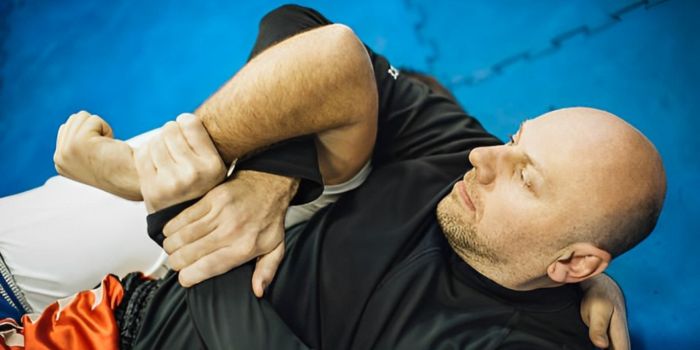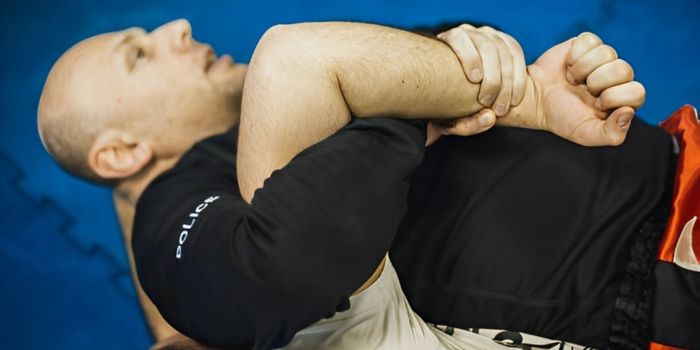Arm locks are among the most versatile and effective techniques in martial arts, revered for their ability to immobilize opponents with precision and control. Whether in self-defense scenarios or competitive sports like Brazilian Jiu-Jitsu and Judo, mastering the art of the arm lock can significantly enhance one’s skill set. In this comprehensive guide, we’ll delve into the intricacies of lock arms from their fundamental mechanics to advanced applications.
Understanding The Locked Arms
At its core, It is a joint manipulation technique aimed at hyperextending or hyperflexing an opponent’s arm, rendering them immobile. The beauty of key lock jiu jitsu lies in their adaptability; they can be executed from various positions and angles, making them invaluable in both standing and ground-based combat. Types of lock arms include the straight key lock bjj, bent arm holds, and figure-four shoulder lock bjj, each with its own set of mechanics and applications. By manipulating the joints, typically the elbow or shoulder, practitioners can exert control over their opponents while minimizing the risk of injury.

Techniques for Executing Arm Holds:
Executing a successful bjj wrist lock requires precise positioning, leverage, and timing. To perform a basic shoulder lock, start by controlling your opponent’s arm and isolating the joint you intend to manipulate. Apply pressure gradually, ensuring smooth and controlled movement to avoid resistance. Emphasize the importance of proper technique over brute strength, as finesse is often the key to unlocking an opponent’s defenses. Continuous practice and refinement are essential for improving execution and effectiveness.
Credit: Howcast
Variations of Arm Bar Takedown:
Arm locks come in various forms, each with its own set of nuances and applications. Standing armlocks are commonly used in self-defense situations, where quick immobilization is crucial. Ground-based key lock bjj, on the other hand, are prevalent in grappling arts like Brazilian Jiu-Jitsu, where practitioners leverage body weight and positioning to secure submissions. Advanced variations of key lock bjj involve intricate transitions and setups, requiring a deep understanding of body mechanics and timing. Exploring these variations can broaden one’s repertoire and enhance overall proficiency in arm locking techniques.
Common Mistakes to Avoid:
Despite their effectiveness,locked arms are not immune to errors. Common mistakes include improper positioning, insufficient leverage, and telegraphing intentions to opponents. To avoid these pitfalls, practitioners must focus on maintaining control and fluidity throughout the execution of it. Additionally, safety should always be a top priority, with practitioners exercising caution to prevent injury to themselves and their training partners. By identifying and correcting these mistakes, practitioners can elevate their locked arms game to new heights.
Training Drills and Exercises:
Mastering shoulder locks requires dedicated training and repetition. Recommended drills and exercises focus on developing technique, strength, and timing essential for executing kimura arm bar with precision. Partner drills allow practitioners to simulate real-world scenarios and refine their skills in a controlled environment. Solo drills complement partner training by enhancing muscle memory and fluidity of movement. Consistent practice of these drills is essential for building confidence and proficiency in executing this locks under pressure.

Applications of Arm Locks:
The practical applications of this lock extend beyond the confines of the dojo or competition mat. In self-defense situations, key lock jiu jitsu offers a non-lethal means of subduing an aggressor while minimizing harm. In martial arts competitions, It plays a pivotal role in scoring points and securing victories. Real-life testimonials from practitioners highlight the effectiveness of lock arms in defusing potentially dangerous situations and gaining a competitive edge. By understanding the context in which shoulder lock bjj can be applied, practitioners can better appreciate their significance in both practical and competitive settings.
Credit: Michael Eckert
Advanced Concepts and Strategies:
For seasoned practitioners looking to elevate their kimura arm bar game, delving into advanced concepts and strategies is essential. Chaining bjj wrist lock together allows for seamless transitions between techniques, catching opponents off guard and increasing the likelihood of success. Strategic positioning and setup play a crucial role in setting up lock arms from various positions, requiring foresight and anticipation.
Moreover, understanding counters to common defenses against key lock bjj equips practitioners with the tools to adapt and overcome resistance effectively. Mastery of these advanced concepts and strategies distinguishes elite practitioners from the rest, showcasing the true artistry of shoulder locks.
Conclusion:
In conclusion, mastering the arm lock is a journey that requires dedication, patience, and perseverance. By understanding the fundamental mechanics, exploring various techniques and variations, and honing advanced concepts and strategies, practitioners can unlock the full potential of this versatile technique. Whether for self-defense or competitive sports, bjj wrist lock offers a potent means of asserting control and dominance over opponents.
Aspiring martial artists are encouraged to continue practicing and refining their bjj wrist lock techniques, embracing the challenge of mastering this fundamental aspect of martial arts. Let’s continue the conversation and share our experiences to foster growth and development within the martial arts community.
Frequently Asked Questions (FAQ's)
Q1: What does an arm lock do?
Ans: It is a grappling technique used in martial arts to immobilize or control an opponent by hyperextending or hyperrotating the elbow joint. It can cause pain or discomfort and force the opponent to submit or surrender.
Q2: What causes arm lock??
Ans: Arm locks are typically caused by applying pressure or torque to the opponent’s arm, often by using leverage or body weight. This manipulation can hyperextend or hyperrotate the elbow joint, resulting in pain or restriction of movement.
Q3: Is it arm lock or armbar?
Ans: The terms “arm lock” and “armbar” are often used interchangeably to refer to techniques that involve manipulating the opponent’s arm to create leverage and control. Both terms essentially describe the same concept, although “arm lock” may refer to a broader category of techniques, while “armbar” specifically implies locking the arm at the elbow joint.
Q4: How do you get out of arm lock?
Ans: Escaping a shoulder lock typically involves techniques such as hand fighting, changing body position, or using leverage to relieve pressure on the affected joint. Specific escape methods may vary depending on the type of arm bar lock applied and the positioning of the opponent. Training in proper defense techniques and maintaining awareness during grappling exchanges can help prevent being caught in shoulder locks.


